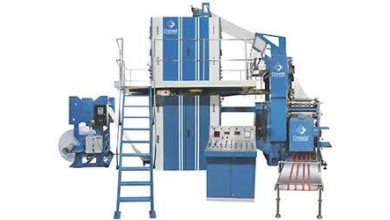How much does it cost to start a restaurant business?

If you’re considering opening a restaurant, you likely have many questions. Among the more urgent is cost. What is the price of starting a restaurant and the expenses associated with this type of business?
The answer isn’t straightforward and varies based on several factors, such as the restaurant type you want to open, where you want to operate, and how large a restaurant you plan. For example, do you want in-restaurant dining or exclusively takeout and delivery services? Narrowing down these elements and understanding the expenses of opening and running a restaurant will help you navigate how to increase restaurant sales.
Restaurant startup costs vary, ranging from $175,500 to $750,000. If the high startup costs feel overwhelming, don’t get discouraged. We’ll cover how much it costs to open your restaurant and how an innovative strategy, like the ghost kitchen method, helps drastically reduce these costs.
Food costs
The cost of food weighs heavily on your operating expenses. Food cost generally comprises around 28% to 35% of a restaurant’s ongoing expenses. However, food costs differ based on the menu items you plan to serve. For example, a steakhouse may run up to 40% in food costs, while an Italian restaurant may run closer to 28%.
The cost of food, however, isn’t always straightforward. Therefore, it’s important to consider how many profit dollars your menu items will generate. For example, a menu item may have 35% food costs but still generate more profit than a 28% food cost menu item because of its popularity and volume sold. As a result, it’s important to consider promoting items based on their “gross profit contribution” rather than on low food costs alone.
Also, know that food costs are volatile. A bad weather event like a hurricane or other natural disasters can quickly throw food costs and profits into flux. You’re also at the mercy of trends driving up demand and prices. If avocados, for example, become a hot item on the market, you are vulnerable to supply-and-demand issues, which may drive up food costs.
Vendor relationships are also crucial as you launch and maintain your restaurant business. One study found four in 10 restaurant owners actively negotiate with vendors to keep their food costs low. Consider this as you build vendor relationships and plan for the future.
And finally, be mindful of food waste. A difficult balance exists between not having enough of an item and having too much. One study found that 58% of restaurants struggle to manage their inventory properly and end up ordering too much food, wasting money and food.
Labor costs
Labor makes up a large slice of your operating costs and includes hourly wages, vacation pay, sick days, employee benefits, payroll tax, and more.
Restaurants attempt to keep labor costs at around 25% to 30%. Quick-service restaurants are at the lower end of the range, while casual dining is at the upper end. But how do you calculate labor costs?
Labor costs are the total for a period divided by the total sales multiplied by 100.
Let’s take a look at an example. Your November labor costs were $20,000, and your total monthly gross sales were $65,000. Therefore, labor cost is $20,000 divided by $65,000 and multiplied by 100. This gives you about 31%, just slightly above the upper limit of 30%.
Market conditions and emerging regulations play into your labor cost. For example, new minimum wage laws could significantly impact your labor costs. Additionally, labor shortages have the potential to drive up these costs as well. For example, one study found seven in 10 restaurants struggle to fill positions due to a labor shortage.
Rent
Every restaurant needs space, and the cost of that space varies based on your goals. For example, if you plan to open a large restaurant with a spacious dining room, the price will be much higher than a small restaurant with plans for only a takeout and delivery business. The average restaurant rent makes up around 5% to 10% of a restaurant’s monthly costs. One survey found that the median rent of a restaurant is $5,000 per month.
If you’re looking to save money in this area, we’ll cover how ghost kitchens drastically reduce the required space and, therefore, the rent you pay, helping you turn a profit faster.
Technology costs
A few decades ago, technology played a small role in the restaurant industry, but now it’s the backbone of the customer experience. Without the right technology, you risk creating bad customer experiences, which can quickly reduce profits. Consider the following when planning for technology:
• An employee scheduling system. Nearly one-fourth of restaurants say they spend three or more hours working on employee schedules, which is why a scheduling system can be an essential tool.
• A point-of-sale (POS) system. A good POS system is important to provide a seamless customer experience. What’s more, is that 70% of restaurant owners report the ability to gain insights from their POS system helps grow their profits.
• A single platform and table for deliveries. Your technology must connect seamlessly with multiple vendors to create a single workflow if you offer delivery service.
The cost of your technology will vary based on what tools you decide to use. Regardless, select technologies that give you access to insights. These insights will give you an in-depth view of the many factors influencing sales.
Other costs to consider
As you inventory the potential costs of opening your restaurant, there are a few more categories to consider.
Marketing costs: Marketing will help you grow your food business from unknown to respected and adored by customers. If you manage marketing in-house, your expenses are less. For example, you might pay an existing employee to devote several hours a week to marketing activities, such as social media. Alternatively, you might use a professional marketing agency, which could cost thousands.
Décor and remodeling costs: Even if you lease a commercial space previously a restaurant, you will likely have some remodeling costs. Expect to spend anywhere from $5,000 to $100,000 or more.
Kitchen equipment: The cost will depend on whether you decide to lease or purchase the equipment. You’ll also need to buy necessities such as dishes, glasses, linens, and other items for in-restaurant dining. A laundry service may also be required to clean your restaurant items.
Licensing costs: A business license ranges from $75 to $7,000, depending on your location and local requirements. The initial cost of a food-handling service license is around $100 to $1,000, and a liquor license costs around $300 to $14,000, depending on state regulations.
If you want to reduce some of the costs of opening a restaurant, you might consider an alternative business strategy. For example, a ghost kitchen allows you to eliminate costs associated with in-house dining and maximize efficiency for a quicker return on investment.
Ghost kitchen versus traditional kitchen
An alternative to the traditional restaurant startup business model enables you to pursue your business without worrying about high upfront costs. If you haven’t heard of a ghost kitchen, you might wonder what it is, how it works, and if it makes sense for your business. Consider the following.
Brick-and-mortar traditional restaurant
One of the key expenses of opening a brick-and-mortar restaurant is the location. If you don’t have a good place, you miss out on foot traffic and other opportunities that make a successful restaurant. And since you’ll offer in-restaurant dining, you’ll need a large space.
For example, you might have a capital investment of $1 million for a space of 2,000 square feet. At a minimum, you would need 25 employees, and the time required to open the new restaurant could be 52 weeks or longer. In this scenario, the capital investment and risk are high.
Ghost kitchen
A ghost kitchen does not have in-restaurant dining, so it requires a much smaller space than a brick-and-mortar restaurant. The business operates on a delivery model, rapidly growing in popularity. For example, you only need a 200-to-300-square-foot space.
Foot traffic isn’t important, so you don’t need to pay a premium for a highly visible space, saving on rent costs. Without the need for front-of-house staff, you hire four employees who are solely focused on making really good food. With CloudKitchens set in a specific location like a ghost kitchen in Miami, Austin, or Chicago, this plan takes as little as four weeks to set up, and you get a return on your investment much more quickly.
Read more interesting guides related to business, technology, online investing, and app development. Visit articleft.com for more information. You will get a lot of information in one place
Click here




